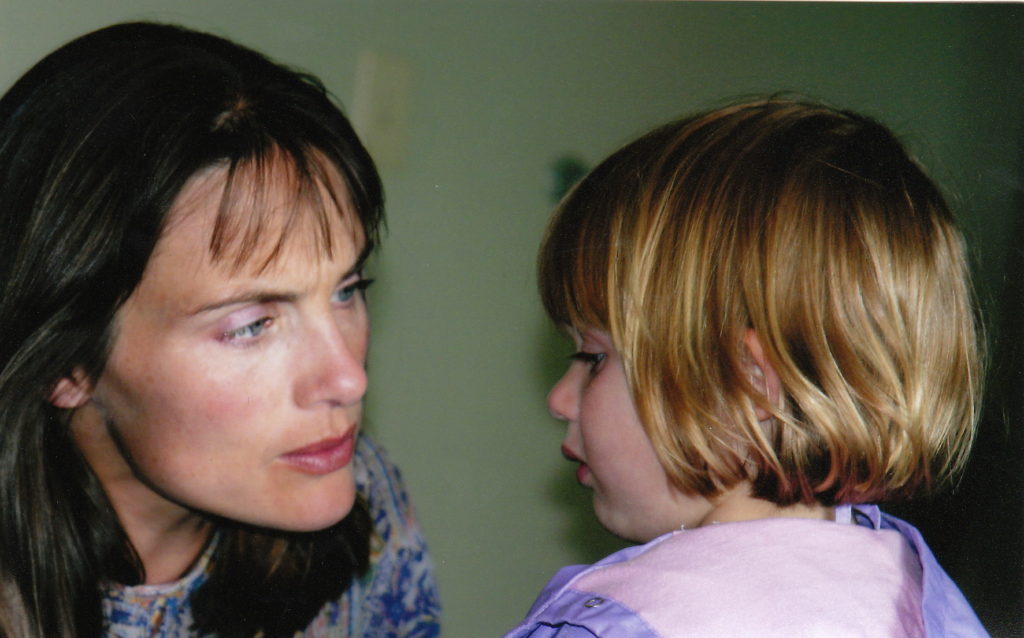The following is a brief review of some key concepts from Clinical Applications of the Polyvagal Theory (Stephen Porges & Deb Dana, Eds., Norton, 2018).
It is now well understood that until our trauma clients genuinely feel safe, no healing will take place. “Cues of safety are the treatment,” according to Dr. Stephen Porges. His Polyvagal Theory that has transformed how we understand the nervous system and now treat trauma emphasizes that “safety is defined by feeling safe and not simply by the removal of threat” (p. 61). It is not good enough to point out to a frightened client that there is nothing to fear in the therapy room with you, they must actually feel it to be so. And this is a moving target.
In the context of providing therapy to those who suffer from the effects of complex trauma, safety may need to be established again and again as younger parts of the self emerge to establish relationship. You may have established a great rapport with the person who shows up to therapy, the part of them that presents a brave and competent face to the world. However, trauma survivors, and this represents all of us to some degree, can be exceptionally resilient and successful in some areas of their lives, while being chaotic and vulnerable in others. They can experience profound splits. The presenting self, the persona, is often very well put together, as this person may have had to put on a brave face over and over again and become very good at seeming reasonable and fine even when they were breaking inside.
The rapport you so carefully establish with your client is critical, but then when the relationship deepens, there will often be a whole new process of creating safety. As van der Kolk states in his chapter on Safety and Reciprocity, “Our most painful injuries are inflicted by people we love and depend on. That is the source of the deepest human grief, as well as of most psychiatric disturbances… [When] the very sources of comfort simultaneously are the sources of danger, this creates complex disturbances” (p. 31).
I have found that early establishing of safety with the presenting self in a complex trauma case can be relatively easy, but that as soon as the relationship deepens, we enter an entirely new and challenging terrain. Once we enter the client’s inner circle, we can suddenly be perceived as a threat because it was in the context of these very close relationships that the deepest trauma occurred. In session, the client can move from a sense of safety to one of threat in a heartbeat. The trigger can be something you can’t even see, perhaps something as seemingly-benign as an increased sense of closeness to you.
Van der Kolk said these problems will show up in two ways in our clients, both externally and internally, and the Polyvagal Theory makes sense of how this happens. Under real or perceived threat, the body will mount the series of defenses we are familiar with: fight/flight which can lead to “various degrees of unmanageable behavior”, and/or “withdrawn self-isolation” which moves the system into parasympathetic (dorsal-vagal) shutdown. According to van der Kolk, “Both adaptations interfere with play, formation of friendships, social awareness, emotional responsiveness and language development” (p. 31).
Pat Ogden explains, in her chapter on integrating Polyvagal Theory with her Sensorimotor Psychotherapy, that people can experience sympathetic arousal or parasympathetic slowdown in vastly different ways depending on whether or not fear is present. Arousal without fear is excitement (sport, dance, performance) and slowdown without fear is deep relaxation (meditation, yoga, daydreaming). Ogden said stimulating these states without fear may have inherent healing properties. “Perhaps their nervous system recalibrates as they learn to tolerate extremes of arousal… This recalibration leads to better social engagement because “when safety and choice are paramount, the evolutionarily newer ventral vagal branch of the parasympathetic system that regulates the heart, calms the viscera and governs the muscles of the face is activated, [this enables] positive social behavior” (p. 40).
Ogden wrote of her early days as a therapist, and how she moved clients through powerful, cathartic experiences of early trauma experiences, only to find that they became more dysregulated as a result. She tried various body-based exercises like grounding, centering and use of breath, and found attention on helping the body remain calm and present as the client made contact with early memories was slower going, but ultimately more effective. This attention the ‘window of tolerance’ is now standard practice in trauma therapy. Polyvagal theory gives us a clear sense of why such an approach is effective.
The concept of neuroception is key
Porges coined the phrase neuroception as our innate and automatic ability to detect threat or safety in our environment. Neuroception could also be seen as the internal communication system we come into direct contact with when we are focusing, an elegant practice that enables us to connect safely with our inner felt sense. Ogden notes that teaching clients about neuroception and how it can automatically trigger nervous system responses helps clients feel less shame and self-judgment about their behaviours. Cues of threat that go unnoticed consciously, can still trigger fight/flight and/or shutdown, and an understanding of how this works can clear confusion for the client about some of their challenging and automatic behaviours.
In therapy, the work then becomes in part learning to identify triggers, and in part learning to notice and manage the sensations and impulses that come up in response to these triggers. When a past trauma is “touched and awakened” (to use Bonnie Badenoch’s lovely phrase), the body will initiate defensive responses that are rarely under the person’s control. Focusing, the ability to pause and notice, ask inside with compassion and then assess whether the current environment is truly as unsafe as the body seems to think, is something that brings the client back a sense of self-control, understanding and relief.
Love as the key to creating a therapeutic presence
Ron Kurtz, who developed the Hakomi method and was Ogden’s teacher, suggested a beautiful practice to help create the loving, therapeutic presence so necessary to our work as therapists. He suggests we simply discover and hold what we love about each client. “My first impulse is to find something to love, something to be inspired by, something heroic, something recognizable as the gift and the burden of the human condition, the pain and grace that’s there to find in everyone you meet” (Kurtz, 2010, from Readings in the Hakomi method, Hakomi.com).
Ogden concluded that “The felt sense comes to life in the science of the Polyvagal Theory which teaches us that the wisdom that we need is in our bodies and nervous systems and is deeper than cognitive explanations or mental assessments of danger and safety. Polyvagal Theory describes the drive for connection and intimacy as a nonconscious biological imperative situating any relationship, including the therapeutic relationship, in a new realm… At its core, Polyvagal Theory is about love and identifies the physiology behind it” (p. 48).
Embodying love to stay on target
This is a beautiful conclusion – that love is the key to providing safety in the therapy room. Badenoch underscores that this loving attention must come with “the ability to be present without agenda” (p. 79), something our culture does not teach us very well. In the challenge of doing deep trauma work, where the client’s neuroception of safety can be ephemeral, what the Polyvagal Theory tells us is to hold steady, and remain connected to the feelings of love, admiration and respect you hold for the client. This creates the environment they need to return to safety, social connection and the ability to heal due to the combined presence of your sustained loving support and their natural resilience.
Dr. Leslie Ellis teaches dreamwork, focusing and trauma treatment, and is author of A Clinician’s Guide to Dream Therapy.











 dreams remain a subject of considerable debate. For example, there is no consensus on the purpose of dreaming, or even if they have a purpose, and a wide-ranging set of ideas about their source and what they might mean. Their ongoing mystery is part of what makes them so alluring.
dreams remain a subject of considerable debate. For example, there is no consensus on the purpose of dreaming, or even if they have a purpose, and a wide-ranging set of ideas about their source and what they might mean. Their ongoing mystery is part of what makes them so alluring.